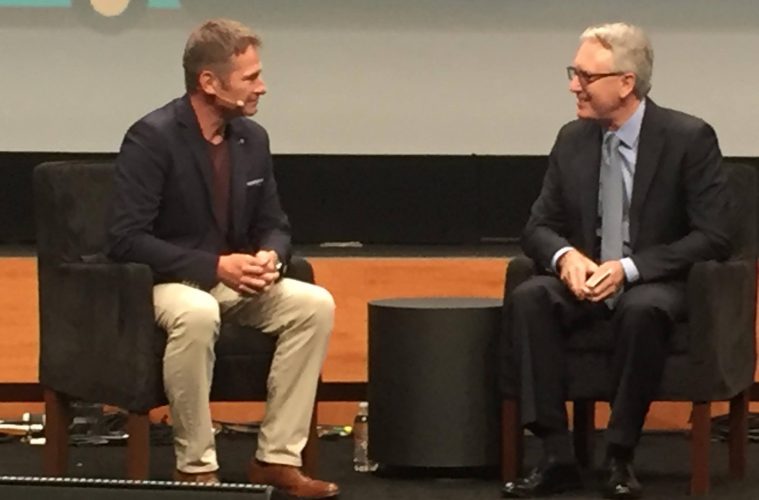‘Retail Isn’t Dead. It’s Just Shedding Its Skin’
NASHVILLE — Constant headlines of retailers closing shop and the disruption caused by the impending purchase of Amazon’s purchase of Whole Foods Market, something NAMM President and CEO Joe Lamond called “One of the biggest stories of our time,” is certainly reason to give anyone in the MI industry pause.
However, this does not mean retail is dying, author Doug Stephens, known as the Retail Prophet, said Thursday during an opening breakfast session here to kick off Summer NAMM.
“Retail isn’t dead. It’s just shedding its skin,” Stephens said during the breakfast session entitled “The Retail Store of the Future.” “The stakes have risen and you can’t be a mediocre retailer. It’s not that retail is dying. It’s that bad retail is dying.”
Stephens described many trends he is seeing now. They are:
- Ecommerce is growing 15 percent per year. Compound that every year and it’s significant. At least 10 percent of total retail is ecommerce and a lot of it is now mobile. About half of all transactions are impacted by mobile somehow.
- Virtual reality can be a tremendous change in MI, allowing such things as allowing a consumer to virtually jam with a band.
- About 8,300 physical retail stores could close this year.
- Consumers are either buying low-end commodity items or premium, items as investments. There are far less purchasers of products carrying price points in between.
So with all of this information, how can MI retailers rise above the fray and differentiate themselves in the future? “The consumer really wants an experience. Access to goods is not a problem,” said Stephens. “It’s not what you sell but how you sell what you sell.
The challenge is building that experience, he added. “Products can actually be secondary to experience,” he stressed. “There are two value propositions working well. One is the high utility proposition, whereby the retailer provides the most accessible, cheapest ready to serve at any time. The other is high fidelity, where you drill so deep into an experience that nobody can challenge it and [you] will own my space. And [you] will charge more for that. If I had to choose one, high fidelity is my preference. The other option has you taking on Amazon.”
The Retail Prophet continued that creating an experience is so important that it’s possible to even charge membership fee in the future. “Costco charges for its membership and makes little on the products and most of its money on memberships,” he said.
There are five common things good retailer do well today, Stephens added.
- They are highly engaging and make a great experience that’s memorable in terms of what you see, hear or taste.
- They are unique. Customer gets the feeling they are doing something they never did before.
- An element of personalization. Knowing the tastes of the consumer.
- There is always a surprise. Something the consumer didn’t expect when they walked into the store.
- Repeatability: Every customer gets the same level of experience every time.
He noted retailers who have done a great job of meeting customers’ needs and solving an inherent problem include Uber, Airbnb and Warby Parker.
“We don’t just open the store. We lift the curtain on a performance,” Stephens relayed. “The consumer is not just a shopper. They are the audience.”
Stephens acknowledged MI retailers are busy. So if they can only do one thing, he recommended journey mapping. “Look at every element of a consumer experience,” he said. “Identify moments of truth where if you let consumer down you lost them. What’s the combination we can apply to be different. Journey mapping makes a difference. It forces you to confront your blemishes.”
Specifically for MI retailers, Stephens recommended to go after a customer’s obsession to be better a better-than-average musician. “You’re selling someone’s deepest aspiration to be John Lennon for just 20 minutes. You’re selling the dream.”


